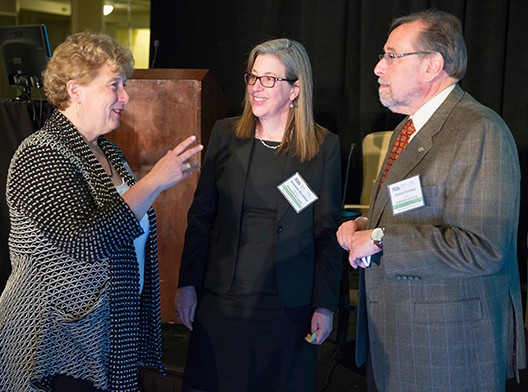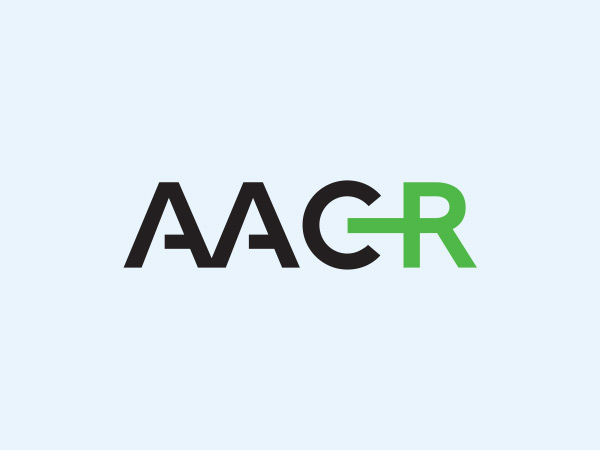Personalizing Targeted Immunotherapy: The Promise and the Problem
This year may indeed be the year in which a class of immunotherapeutics called PD-1 and PD-L1 inhibitors are approved for a variety of cancers, as forecast recently by Drew Pardoll, MD, PhD, in a post on this blog. There is huge excitement surrounding these drugs because patients with numerous types of cancer treated with these drugs have experienced dramatic and durable responses. However, there are some challenges surrounding how best to use these drugs in the clinic to ensure that the right patient is treated with the right PD-1 or PD-L1 inhibitor.
Last month, the U.S. Food and Drug Administration (FDA), the American Association for Cancer Research (AACR), and the American Society of Clinical Oncology (ASCO) convened a one-day workshop in Washington, D.C., titled “Complexities in Personalized Medicine: Harmonizing Companion Diagnostics across a Class of Targeted Therapies,” to bring together drug and diagnostic developers, patients, advocates, physicians, pathologists, regulators, and payers to discuss these challenges and identify solutions.

Workshop co-chairs Laura van ‘t Veer, PhD, left, chair of the AACR’s Diagnostics Policy Subcommittee and associate director of applied genomics at the UCSF Helen Diller Family Comprehensive Cancer Center; Elizabeth Mansfield, PhD, deputy office director for personalized medicine, Office of In Vitro Diagnostics and Radiological Health, CDRH, FDA; and Richard Schilsky, MD, FACP, FASC, ASCO’s chief medical officer.
What is the problem?
Given their enormous potential, numerous pharmaceutical companies are developing PD-1 and/or PD-L1 inhibitors. But each company’s drug has a very specific mode of action, which means that all the immunotherapeutics may not be equally effective in any given patient. To identify the patients who are most likely to benefit from their drug, each drug company is developing an in vitro diagnostic test, known as a companion diagnostic.
Having multiple drug-diagnostic pairs in the pipeline raises the very real possibility that multiple PD-1 inhibitors may be approved by the Food and Drug Administration (FDA) for a single indication like non-small cell lung cancer (NSCLC), each with its own specific companion diagnostic. Whether and how well a cancer patient responds to treatment with a PD-1 inhibitor is not completely understood, but appears to depend on many factors including the type of cancer and the level of PD-L1 expression on the tumor and/or the immune cells infiltrating the tumor. Since all the drugs are designed to target PD-1 or PD-L1 in patients with NSCLC, the situation is likely to get very confusing for patients and physicians if the tests are not interchangeable.
Imagine the following scenario:
During a consultation, a patient learns about a new category of drugs, namely PD-1/PD-L1 inhibitors, and is told that to be prescribed any of these drugs, he or she would have to undergo testing. The obvious next step is to run a test to decide whether the patient should receive a PD-1/PD-L1 inhibitor. But, which test should be run?
Each test will only inform the physician whether the patient is eligible for treatment with its paired drug. Which means that even if the results of test A indicate that the patient may not benefit from treatment with drug A, the patient might still be eligible for treatment with drug B provided the results of test B are favorable. If test B results do not confer eligibility, then perhaps test C should be used to determine eligibility for drug C, and so on.
Practically, this creates many challenges in the clinic, such as: How often will a patient have to undergo biopsies for testing? How long will it take to get each test result, when in the meantime the patient’s tumor may be growing? How much will it cost?
A potential solution
A highlight of the FDA-AACR-ASCO workshop was the unveiling of a blueprint proposal developed by four pharmaceutical companies (Bristol-Myers Squibb Company, Merck & Co. Inc., AstraZeneca PLC, and Genentech, Inc.) and two diagnostic companies (Agilent Technologies, Inc./Dako Corp and Roche/Ventana Medical Systems, Inc.).
The goal of the proposal is to characterize the performance of the various PD-1/PD-L1 companion diagnostic tests currently under development by Dako and Ventana for NSCLC. NSCLC was chosen as the first disease for study because all the pharmaceutical companies involved in developing the blueprint proposal have active drug development programs in this disease area.
The proposed study would help build an evidence base for companion diagnostic characterization in the pre-approval stage, such that once the tests are approved, the information generated can lay the groundwork for post-approval studies that will help inform patients, physicians, pathologists, and others on how best to use the tests to determine treatment decisions.
Historically, guidelines for optimal testing and drug choice for treatment begin only after the products are approved and often take many years to be finalized. One of the most significant outcomes of this workshop is a commitment by commercial sponsors, both pharmaceutical and diagnostic manufacturers, to proactively collaborate in the pre-approval stage. This will better equip end users of these products, physicians and patients, to make treatment decisions once these products are approved.
What happens next?
The study proposed in the blueprint is a step forward to enabling informed clinical use of PD-1 and PD-L1 inhibitors by physicians and patients. When completed, the study will potentially pave the way for developing information on how to extrapolate results from a single test to decide which of the many drugs would best treat a patient without subjecting the patient to additional biopsies and testing.
The stakeholders are committed to keeping up the momentum generated at the workshop in this ongoing effort to deliver personalized immunotherapy treatments to patients.




